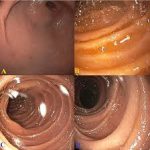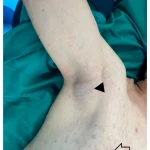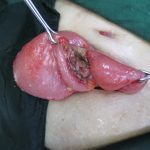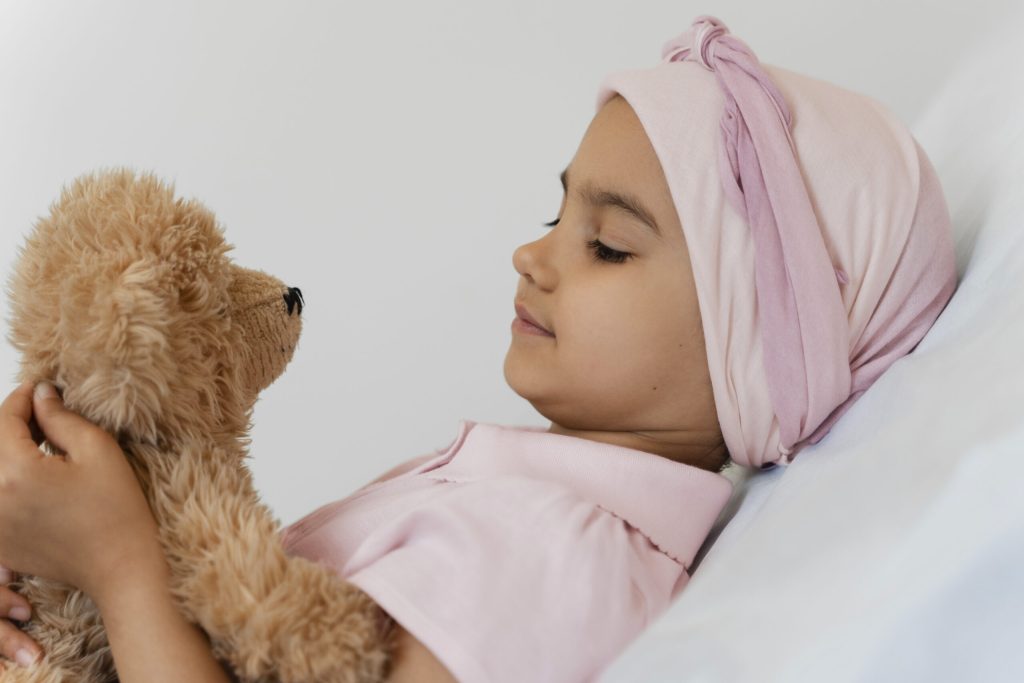
Doctors plan your child’s treatment in one of the UK’s children’s cancer centres. Your child has most of their treatment in this specialist centre, but some care might take place at a hospital closer to home.
Children’s cancer centres have teams of specialists who know about Wilms tumours and the best way to treat them. Wilms tumour is curable in about 9 out of 10 children (about 90%).
The main treatments include:
- chemotherapy for almost all children
- surgery for all children
- radiotherapy for some children
In the UK and many other countries, children usually start treatment without having a biopsy  if the tumour looks like a Wilms tumour on the CT or MRI scan. The first treatment is usually chemotherapy. After a few weeks (usually 4 weeks) your child has surgery to remove the tumour. The tumour is looked at under the microscope. Your child’s doctor then makes decisions about further treatment.
if the tumour looks like a Wilms tumour on the CT or MRI scan. The first treatment is usually chemotherapy. After a few weeks (usually 4 weeks) your child has surgery to remove the tumour. The tumour is looked at under the microscope. Your child’s doctor then makes decisions about further treatment.
Decisions about treatment
The specialist team plan treatment according to the type and stage of Wilms tumour your child has. A pathologist  looks at the Wilms tumour cells under a microscope. This helps the team decide on the risk group for the tumour. This means if there is a low, medium, or high risk of the cancer coming back after treatment.
looks at the Wilms tumour cells under a microscope. This helps the team decide on the risk group for the tumour. This means if there is a low, medium, or high risk of the cancer coming back after treatment.
They will also look at:
- if your child has a tumour in one or both of their kidneys
- whether there is any spread in the abdomen (tummy area) beyond the kidney (for example to the lymph nodes
 )
) - whether the cancer has spread to distant organs such as the lungs
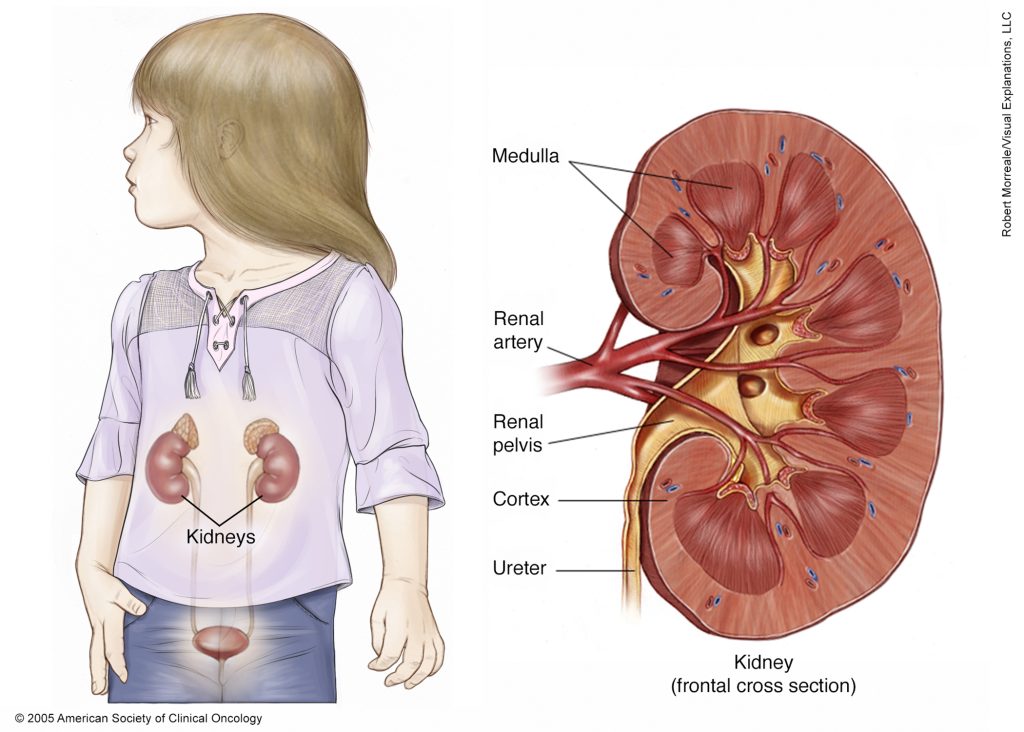
Chemotherapy
The first treatment your child is likely to have for Wilms tumour is chemotherapy. The aim is to shrink the tumour and make it smaller. This helps to make surgery easier.
Most children with Wilms tumour have these chemotherapy drugs:
- vincristine
- actinomycin D (also known as dactinomycin)
Your child might have another drug with vincristine and actinomycin D, for example, doxorubicin. This may be because the tumour is classed as high risk or has spread to other parts of the body. Or the initial treatment is not working as well as doctors hoped.
Some other chemotherapy drugs used for high risk Wilms tumours include:
- cyclophosphamide
- etoposide
- carboplatin
Children 6 months or older usually have 4 weeks of chemotherapy before surgery. If your child is under 6 months they usually have surgery first.
Depending on the stage and risk group your child might have between 4 and 34 weeks of chemotherapy treatment after surgery.
Surgery
After chemotherapy, all children have surgery to remove the affected kidney. This operation is called a nephrectomy.
The surgeon removes the kidney and ususlly some of the tissues around it. The type of surgery for each child is different. The amount of surgery depends on where exactly the tumor is and if other surrounding tissues are involved.
Your child’s surgeon will explain more about your child’s surgery to you.
Most children are in hospital for less than a week. A nephrectomy is a big operation and it can be painful. Your child’s healthcare team will give them regular painkillers to help. After surgery, your child usually has a catheter  in place for a short time.
in place for a short time.
Other problems are not common but can include:
- bleeding
- infection
- a blockage in the bowel
Wilms tumour in both kidneys (bilateral Wilms tumour)
Treatment for bilateral Wilms tumours usually involves surgery to both kidneys. Your child’s surgeon aims to remove as much of the tumour as possible. And leave as much healthy kidney tissue as they can.
Radiotherapy
Your child’s doctor may recommend they have radiotherapy after surgery. This might be because:
- of how the tumour looks under a microscope once it has been removed – this can give doctors an idea if the tumour is likely to come back
- of how far the tumour has spread outside the kidney
- the tumour has spread to distant organs, like the lungs, and this hasn’t gone away quickly with chemotherapy
Treatment by stage
We also have more detailed information about the stages of Wilms tumour and treatment by stage.
Follow up
Your child has regular follow up appointments. This is generally every few months for the first 2 to 3 years. The follow up appointments then gradually get further apart. All children have at least 5 years follow up with their doctor. These appointments are to check:
- how they are recovering
- their development
- if they are having any problems following treatment
- if there are any signs of the Wilms tumour coming back
Children will also have regular tests such as CT scans, x-rays, and ultrasound scans of the tummy during this time. They may have other tests including blood tests. Your doctor will explain what type of tests your child will have and how often.
Long term side effects
Very few children have long term side effects from treatment, or from having one kidney. Some of the long term problems that can happen include:
- changes to how the heart works due to having doxorubicin chemotherapy. Your child will have regular heart scans to check this
- your child’s kidney stops working properly. This may mean they need help to remove waste products from the blood (dialysis) or a new kidney (kidney transplant)
- a very small risk of developing a second cancer later in life
- a risk of being unable to have children when they are older if they have had a chemotherapy drug called cyclophosphamide
- a risk of hearing problems due to the effects of having carboplatin chemotherapy
Long term follow up clinics are available for those who are 5 years or more when they finish treatment. Your child’s specialist can make referrals to other health professionals if needed.
Wilms tumour that has not gone away or has come back
Wilms tumour that does not go away is called refractory disease. Wilms tumour that comes back after treatment is called relapsed disease. It can be more difficult to control relapsed or refractory Wilms tumour but there are treatments available.
Relapsed Wilms tumour are rare. If it does come back, it is most likely to happen in the first 2 years after treatment. Relapse is more common in children who:
- had cancer cells in distant parts of the body when they were diagnosed
- had cells that looked very abnormal under a microscope
Your child’s specialist team will explain the different options and support you through this difficult time. The different options will depend on a number of factors such as:
- what treatment they have already had
- where the cancer is
- their general health
- the stage and risk group of the cancer when they were first diagnosed
Research
Researchers are looking at improving the treatment for Wilms tumour, and to understand more about it. There is a large international study that’s collecting information from the time of diagnosis to how well the treatment has worked.
You can find out more about current research from your child’s healthcare team.
Getting support and information
Parents have a lot to think about and are likely to be very worried about getting the best treatment for their child. Feeling frightened about your child having cancer is normal.
Talk to the doctors and nurses about any worries that you have. They want you to feel comfortable and confident with the treatment and care that your child is getting.

